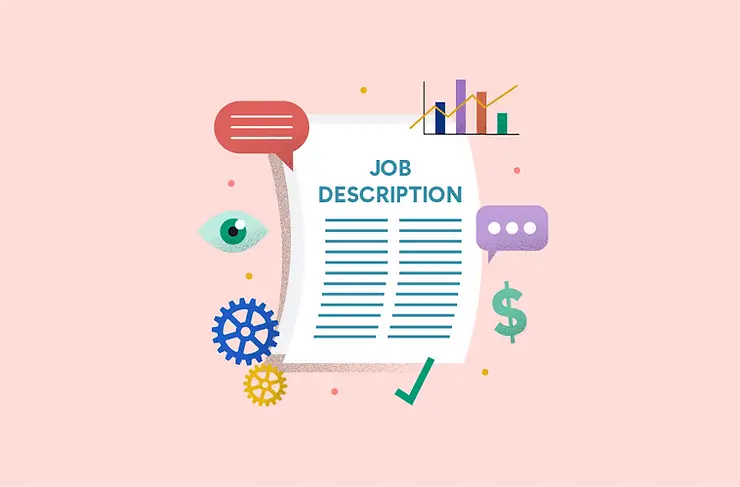Essential tips for making the equitable, inclusive hiring process of your dreams
Building a well-oiled and inclusive hiring machine is no easy task. We have clear legal guidelines on how not to be discriminatory, but the law doesn’t help us when it comes to building a process that is pleasant and efficient for applicants and hiring teams alike. So, we’re going to take some time to unpack a few hiring best practices to make everyone’s life a little easier.
How to make job descriptions inclusive
We’ve already talked about ways to make job descriptions more approachable by getting rid of education, years of experience, and other requirements that are more often suggestions rather than necessities. Other ways to make your descriptions more approachable to a wider pool of applicants include adding a pronoun field, listing the salary, and being transparent about company values.
Add a pronoun field to the application
Adding a pronoun field demonstrates to applicants that your company has an awareness of issues trans and nonbinary job-seekers face on the job market. It can also empower hiring teams to address applicants confidently and respectfully, and it is more likely to help trans and nonbinary applicants feel more comfortable. Make sure to keep this optional so no one feels pressured to share or come out in the application.
List the salary in the description
Listing the salary–which can be a range–opens up your pipeline to more job seekers, since many exceptional applicants won’t apply to positions without salary bands. This also helps to eliminate bias and prevent pay inequity. You’ll find that in some places, like New York, salary transparency is becoming a legal standard for hiring teams.
Keep your bullets concise
Studies have shown that the more bullets in the JD, the more the JD will appeal to a male-identifying audience, and vice-versa. Bullets should make up no more than a third of the JD (25% or less is better)
Avoid gendered language in the JD
This can be trickier than you think! Don’t use gender-coded words like rockstar, ninja, guru, etc. or jargon. For more examples of gender-coded language in JDs, check out this guide from Glassdoor.
Put company values upfront
Being transparent about company values helps applicants understand how your company prioritizes, makes decisions, and reconciles conflict. This is more effective than trying to find employees who “fit the culture” of your workplace, which is only focused on how work gets done. It’s also in your best interest to find employees who align with your company’s values.
Tips for Inclusive Interviewing
First and foremost, be communicative!
Manage expectations for the interview process early and maintain a good relationship and consistent connection with promising candidates. Make it clear who the candidate’s point of contact will be throughout the interview process. Be upfront about how many rounds of interviews there will be and the length of each, when they will know whether they will receive an offer, and when the expected start date is for the position. These can be key steps to an eventual hire!
Take notes
Be sure to notify the candidate you’ll be taking notes so they know you’ll be glancing down (it also helps to let the candidate know where your camera and video conference window is, so they know when you’re making eye contact). That said, take care to stay engaged and show it with nods and smiles where appropriate, and don’t worry about writing down every detail. Break down their answers about past experiences using the B.A.R. method: background, action, and result. Don’t add personal commentary to your notes; this is just so you remember what they told you in the interview.
The job should always be the subject of conversation
Never ask about age, national origin, family/marital status, disability, parenthood, or other personal information that is a legally protected class. If it comes up in small talk, steer the conversation back to job-related subjects. If the candidate offers any of this information freely, don’t add it to your notes. It’s not relevant.
Be mindful of diversity on your interview team
For example, avoid an all-male or ethnically homogenous interview panel if possible. Building in checks for bias on the interview team is essential. You can also try this exercise of bias interrupters with your team before going into the hiring process.
Are we hiring inclusively? Tracking the data
If you’re noticing a consistent lack of diverse representation among candidates in interviews, or the company seems to repeatedly hire people with very similar backgrounds, it’s worth asking questions and looking into the data.
Another best practice is to debrief about candidates live with the interview panel. Talking through feedback live compels interviewers to reflect on factors such as first impressions, contrast effect, negative emphasis (negative information leaving a stronger impression than positive), variable questioning, and more.
Are you getting a diverse pool of applicants? If not, perhaps it’s a recruiting problem and you need to actively work to diversify your pipeline. If you’re getting diverse applicants but they aren’t getting hired, where in the process are they being excluded from consideration? Look for noticeable trends.
If applicants aren’t getting past resume screenings, you might consider anonymizing resumes. If you’re using LinkedIn, you can choose to turn off profile pictures. If they aren’t making it past the first round of interviews, look at your interview structure and ensure more than one interviewer is in those early interviews.
If candidates are getting through interviews, and receiving offers, but not coming on board, what do the offers look like?
There are two main things to keep in mind when creating more inclusive hiring practices: communication and compassion. Always give your candidates as much information as you can about the interview process so that they know what the next step is, and take a compassionate and understanding stance when approaching candidates.
Some of these changes will be small and others will be much bigger than you can do on your own. But they’re all important because they define the experience of your company for candidates, and that experience will absolutely inform their decision about joining your team.
Interested in taking your hiring team to the next level? Check out Ethena's Hiring & Interviewing course and more on our Courses Page.








